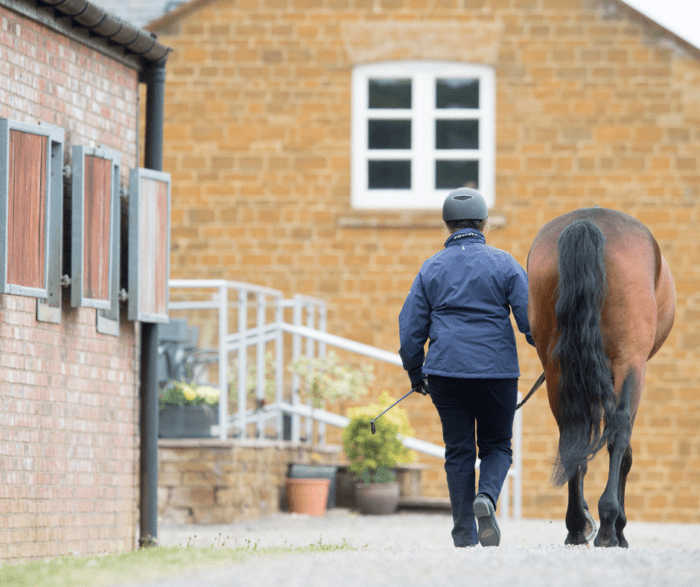One of the most common areas of confusion when arranging Horse Insurance is understanding the requirements for vettings and x-rays. To help make the process easier, we’ve caught up with our expert team at SEIB Insurance Brokers to get a comprehensive guide.

The importance of vetting before purchase
Before purchasing a horse, we strongly recommend arranging a veterinary examination. Not only does this provide peace of mind, but it may also be a requirement for obtaining insurance.
When choosing a vet for the assessment, consider whether using the seller’s vet could create a conflict of interest. To ensure an unbiased evaluation, always select a reputable, independent equine vet or veterinary practice.
Vetting and insurance requirements
Do not wait until the last minute to arrange insurance, as most providers will only accept vettings conducted within a specific timeframe before the policy starts typically between 7 and 30 days. To prevent any delays or rejections due to an outdated vetting, arrange your insurance as early as possible.
Different insurers may require varying levels of vetting, such as a full 5-stage examination or a more basic 2-stage assessment. Factors influencing the type of vetting required include the horse’s age, value, and the level of cover needed. Never assume that a young or unbacked horse will only need a 2-stage vetting—always confirm with your insurer.
If the vetting takes place outside the UK, check with your provider whether it will be accepted or if a UK-based examination is necessary.
Ensuring accuracy on vet certificates
To avoid delays or complications, ensure the vet completes the certificate in full, including passport and microchip numbers on each page. Missing details, even minor ones, can result in processing delays or possible rejection of the certificate.
We advise sending the completed vet certificate to your insurance provider before finalising your policy. This allows them to confirm acceptance and inform you of any exclusions that may apply before you commit to cover.
Understanding x-ray requirements
In some cases, insurers require x-rays in addition to a vet certificate. These must be taken of specific views, labelled correctly, and provided in an approved format, such as DICOM.
Simply obtaining x-rays does not guarantee they will meet your insurer’s requirements. Before scheduling x-rays, consult your provider to determine which images are necessary. Also, check that your vet can supply them in the correct format with proper labelling.
SEIB offers a clear document outlining our x-ray requirements, which you can share with your vet to ensure compliance. Additionally, many insurers, including SEIB, do not accept hoof x-rays if the horse is shod—keep this in mind when arranging imaging. Choosing a reputable vet is crucial, as poor-quality images are rarely accepted, and the cost of repeating them is typically not covered by insurance.
Understanding insurance exclusions
Any pre-existing conditions or clinical findings noted on a vet certificate will generally be excluded from the policy. SEIB provides transparency regarding exclusions so that policyholders fully understand what is and isn’t covered.
It’s important to note that a horse may be deemed suitable for purchase by a vet, yet the insurer may still place exclusions on the policy based on identified risks. These exclusions are not intended to cause frustration but are intended to be clear and transparent as to what a policy will not cover.
If a vet indicates that certain conditions compromise the horse’s suitability for purchase, and you decide to proceed with the sale, you may struggle to obtain illness and injury cover, but you could look for an accidental external injury only policy, such as SEIB’s Core Horse Insurance, as this does not require a vet certificate.
Learn more about SEIB’s Horse Insurance
Our most comprehensive policy:
- Illness & injury cover
- Vet fees up to £5,000 per claim, extending to £7,500 per colic surgery claim
- MRI, CT and bone scans included
- Complementary treatments such as physiotherapy and hydrotherapy
- Optional Public Liability and Personal Accident cover
Save money with:
- Optional 20% co-insurance
- High excess options of £500 and £750 per claim
Our budget friendly option:
- Accidental external injury (wounds) only cover
- Premiums start from £10 a month
- Vet fees from £1,500 - £3,000
- Public Liability, Personal Accident and Legal Expenses included
- Tack & saddlery up to £5,000 per horse
- No vetting needed
Find out more and get a Horse Insurance quote here.
About SEIB
SEIB Insurance Brokers have been providing insurance for Horses for over 60 years. We provide a flexible range of policies to suit your needs from Horsebox Insurance and Horse Trailer Insurance too. Our experienced team of horse owners can help provide you with advice on what cover you might need.
Terms & Conditions Apply.